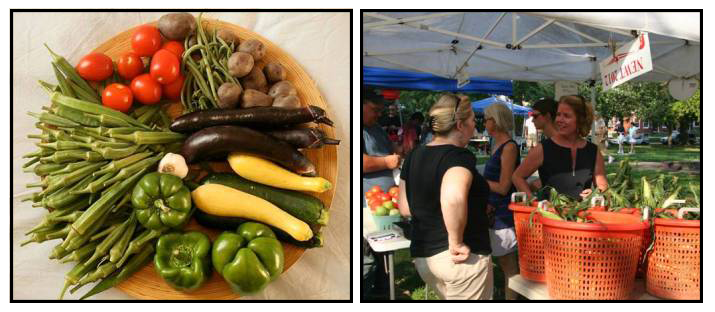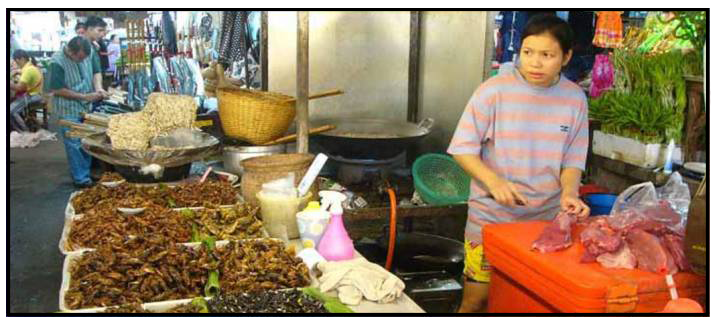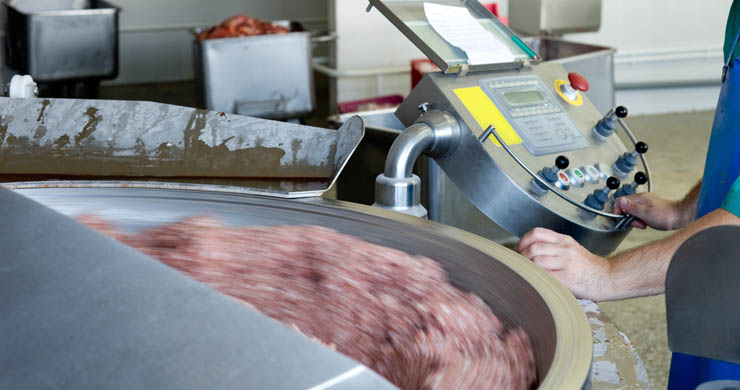Food for thought...
Food for Thought...
In this article we will think about a couple of changes to Britain’s eating habits over the last few decades. We will then look at three things that could change the way that we produce our food.
Changing Markets - Supply and Demand
During World War II supplies of some foods became limited and the government had to control how much food each person or family could buy.
This was called rationing and it affected staple foods like meat, sugar, milk and dairy products, cereals, tea and eggs.

Even after the war most working families’ meals were still based around staples like potatoes, bread, vegetables and meat. It was not until the 1970s that foreign food like Indian curries began to compete with traditional British fare in the high street.
Since then, Asian and Mediterranean cuisine has become so popular in the UK that curry, stir fry, pasta and pizza are high in the lists of British people’s favourite food.

It is unlikely that the clock can be turned back, and imported ingredients are going to be a feature of our supermarkets and restaurants for a long time to come.
Brain box...
Anything for an easy-life
“Cheap food” used to mean growing your own vegetables and making use of parts of animals that many people today might turn their noses up at: kidneys, liver, tongue, pigs’ trotters etc.
In fact, we still eat these bits of animals but they tend to be hidden away in sausages, burgers and ready-made meals.

Ready-made meals are an example of convenience foods which are prepared in a factory and sold ‘ready to eat’. They are whole meals that are sold chilled or frozen. It is these ready-meals that were at the centre of the recent horsemeat scandal.
The future of food?
In the rest of this article we will look at three different ways of farming that might become more common in the future.
1. Community-supported Agriculture
Community-supported agriculture (CSA) means people getting involved in farming the food that they eat. This means:
-
growing food locally.
-
sharing the costs of farming by paying towards the food before it is grown.
-
only eating food that is ready in that season.

Some of the good things about CSAs are:
-
farmers get a more stable income.
-
the community enjoy fresh, healthy food .
-
the food produced is more environmentally friendly.
2. Urban Farming
This summer the Biospheric Project will be launched in Manchester. It will see an old factory being turned into a ‘vertical urban farm’ that could provide “local food” for people living in cities.

The idea is to use some ideas from traditional African farming where different crops are grown above one another. For example, coconuts are grown above bananas which are grown above coffee bushes. Below that yams and other crops grown on or below the surface of the ground are planted.
The first level of the vertical farm may breed worms which will be used to feed fish bred in tanks. The fish will be eaten and their waste will be used as fertiliser for the plants on the floors above. Add in bee hives and chicken coops and it’s starting to sound like a proper farm!
3. Creepy-crawly Cuisine
In May 2013 the United Nations (an organisation which includes the governments of every country in the world) came up with a suggestion for the future of food... Eating insects!
That idea might make you feel queasy, but the fact is that around 2 billion people already eat insects regularly.
It’s not such a crazy idea – insects have lots of protein and nutrients which we need to be healthy and strong. They also produce a lot less greenhouse gases than large farm animals.

Cows, sheep and goats produce about 80 million tonnes of methane, an important greenhouse gas, each year.
How do they release it? You guessed it – breaking wind...
So eating insects may be the healthier and more environmentally friendly choice. If you find the whole idea pretty disgusting, just remember that if you have ever ridden a bike or slept with your mouth open you may well have eaten some bugs without even realising it!
Knowledge Check
See how much you have learned from this Issue of Geography in the News by trying the interactive quiz below. If you do not do as well as you expected then go back and read through the articles a second time before trying again.
Pupil Activity
Find out about some ingredients or dishes that are eaten around the world but which we do not tend to eat in the UK. For example:
-
seaweed.
-
insects.
-
horse milk.
Working individually or in pairs, produce a poster advertising these foods. To persuade people in the UK to eat them you could talk about:
-
their nutritional value.
-
whether or not they are 'environmentally friendly'.
-
how they taste!
Hand in your work to the teacher for marking. They could be displayed in the classroom or corridors – maybe be your posters will persuade people to try some new types of food!


